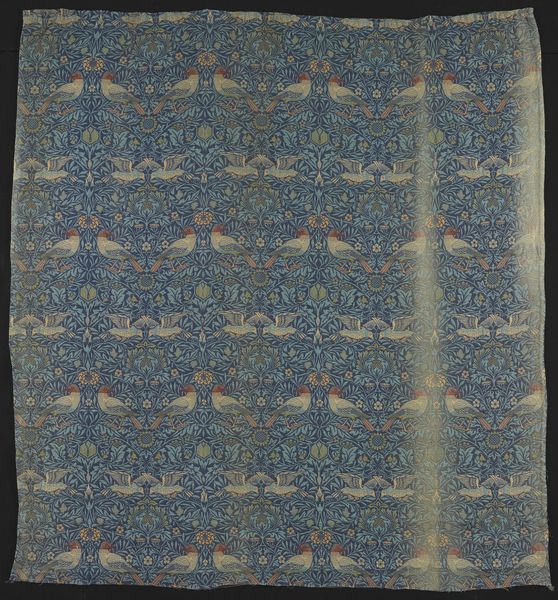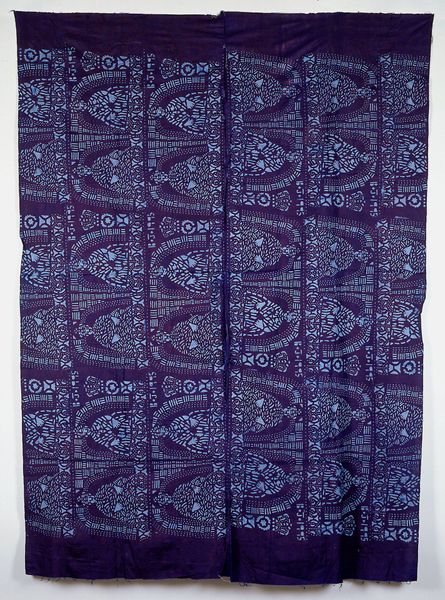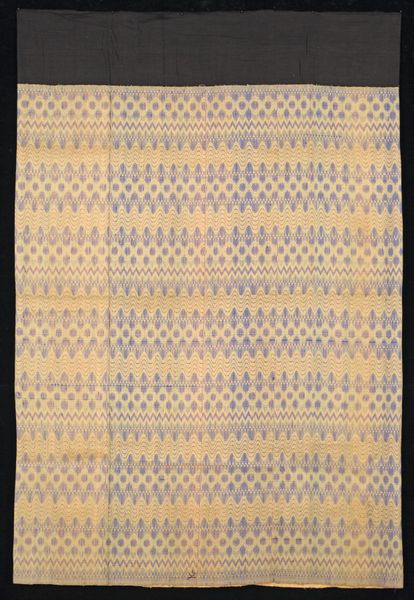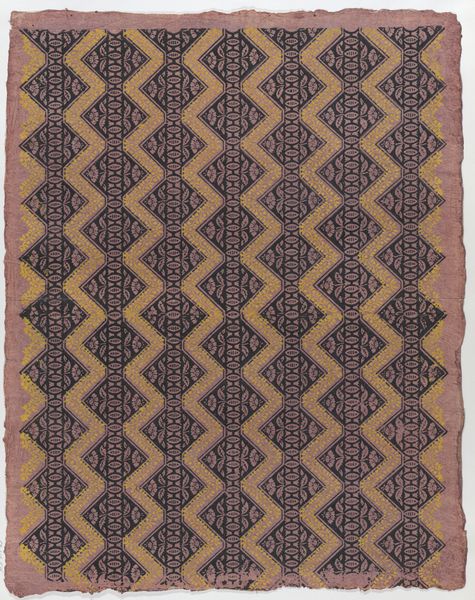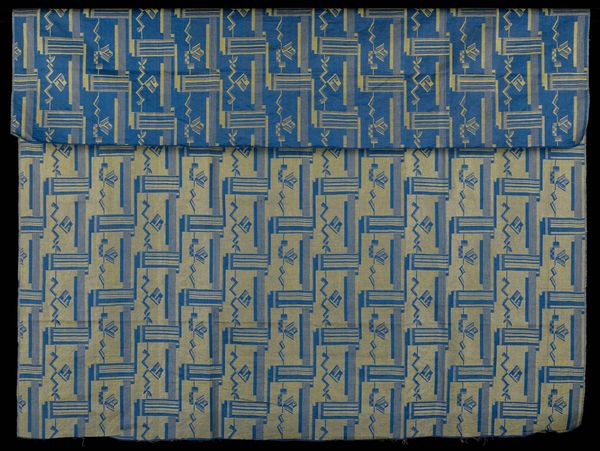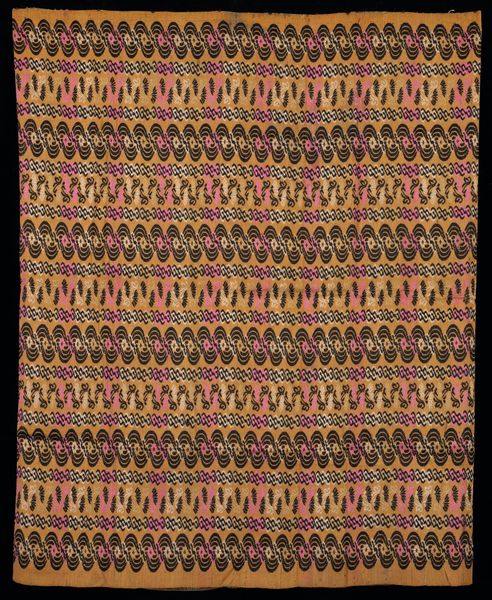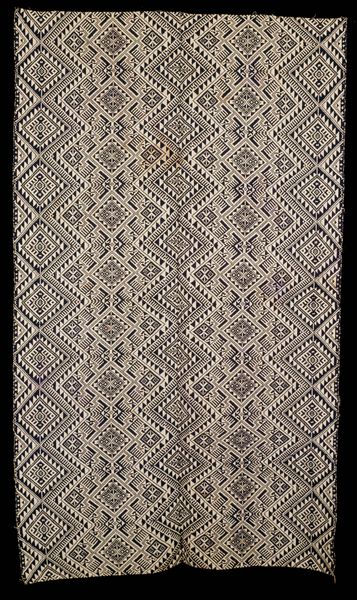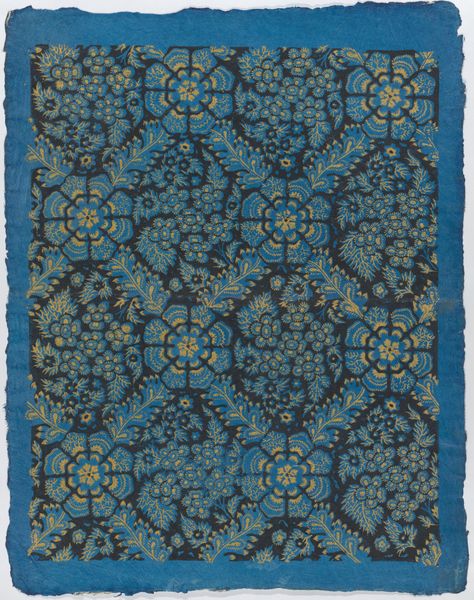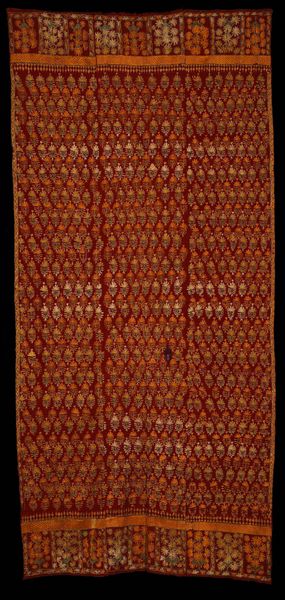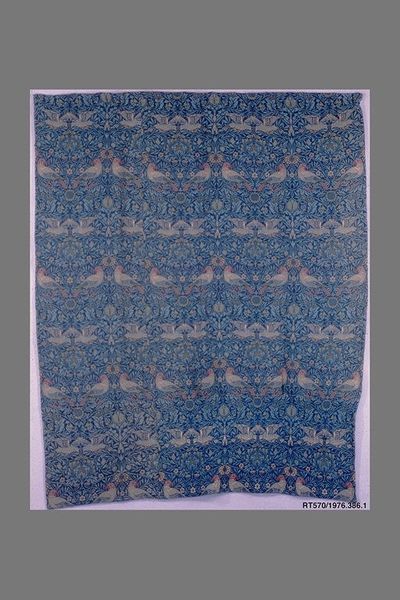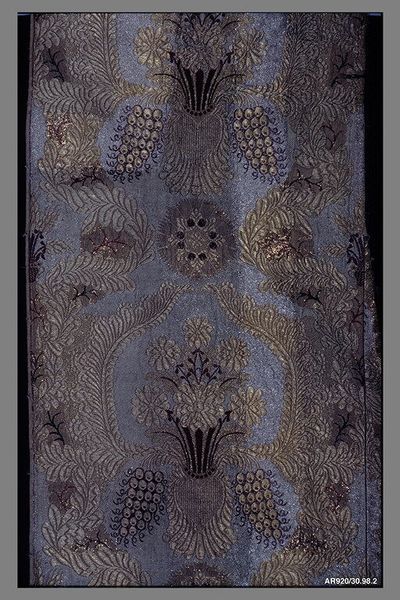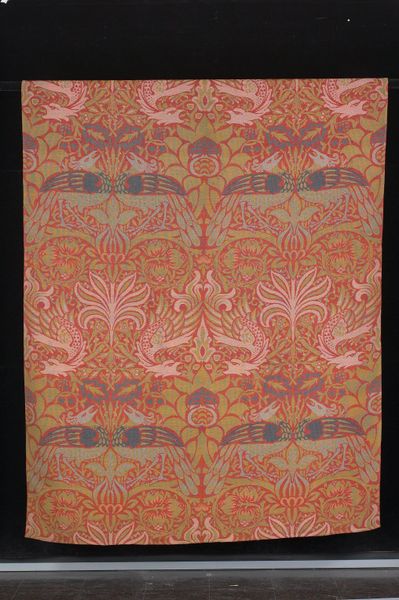
Dimensions: 82 x 71 1/4 in. (208.28 x 180.98 cm)
Copyright: Public Domain
William Morris crafted this textile, "Birds," embedding it with avian figures amidst dense foliage. Birds, often perceived as symbols of freedom and messengers between realms, echo in ancient Egyptian art, where they carried souls to the afterlife. Here, they become part of a repeating pattern, yet their symbolic weight persists. Recall the medieval bestiaries, where birds were moral emblems; a peacock for pride, a dove for peace. Morris, steeped in medievalism, revives this tradition, albeit with a modern twist. The dense patterning hints at nature's abundance but also a certain claustrophobia, perhaps reflecting Victorian anxieties about industrialization and the loss of natural landscapes. The repetitive nature might subtly echo the rhythmic, unconscious patterns of our inner lives, drawing viewers into a space where decoration transcends mere surface appeal. This creates a powerful force engaging us on a deep, subconscious level. Birds reappear across cultures, and the pattern and symbolism of the work has been passed down through history, evolving and shifting with each new historical context.
Comments
minneapolisinstituteofart about 2 years ago
⋮
The noted English designer, William Morris, loved to use a double cloth structure to create interiors fabrics. The interlacing of two cloths during the weaving process could be used to create a sturdy and thus durable textile and also allowed the designer considerable freedom. Morris created this design in 1878. It was first produced in his workshop on Queen Square, London and later woven at Merton Abbey outside of the city. It proved popular as a furnishing fabric and was produced in three colorways.
Join the conversation
Join millions of artists and users on Artera today and experience the ultimate creative platform.
